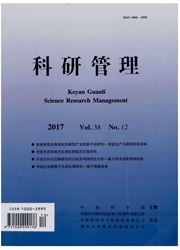

 中文摘要:
中文摘要:
文章分析了创业企业控制权类型、控制权收益构成及其之间的对应关系,通过建立控制权共享收益函数将人力资本专有性与专用性、投资专用性、信任度纳入统一的分析框架。构建了以金融工具为载体的两类控制方式下,两类控制权的两阶段配置模型,分析各因素对不同控制权配置的作用机理,并运用Mathematica软件对理论模型分析结论进行数据模拟。研究发现,受两类控制方式下企业家与投资家控制权收益不同的影响,关键因素对企业剩余控制权配置的作用机理存在显著差异,但对特定控制权配置的影响基本一致。具体表现为,随着创业企业绩效的改善与创新项目成功概率的增加,人力资本专用性、投资专用性、信任度与投资家获得的剩余控制权在联合控制方式下呈先增后减的非线性变化关系,在相机控制方式下呈先减后增的非线性变化关系;人力资本专有性与投资家获得的剩余控制权在联合控制方式下呈先减后增的非线性变化关系,在相机控制方式下呈先增后减的非线性变化关系。
 英文摘要:
英文摘要:
This paper analyzes the type and benefits of control fight in venture capital - backed firms, as well as the correspond- ing relationship between them. In order to put exclusiveness and specificity of human capital, investment specificity and trust into a unified analysis framework, this paper establishes a control fights shared benefits function. The paper establishes a model of two kinds of control fights allocation in two - stage Investment and two kinds of control structure under the support of financial instru- ments, and uses the software of Mathematica for data simulation of theory model analysis. The study shows that, because of the difference among benefits of control fights, which obtained by entrepreneurs and investors under two kinds of control structure, the key factors exist significant differences mechanism on residual control right allocation, but the effect on the allocation of spe- cific control fight is similarity. The specific performance is that, with the increasing improvement of firm performance and innova- tion project success probability, there are nonlinear relationship between specificity of human capital, investment specificity and trust with the investor obtains the residual of control fight, which is first increased and then decreased in joint control, and first decreased and then increased in contingent control. There are nonlinear relationship between exclusiveness of human capital with the investor obtains the residual of control fight, which is first decreased and then increased in joint control, and first increased and then decreased in contingent control.
 同期刊论文项目
同期刊论文项目
 同项目期刊论文
同项目期刊论文
 期刊信息
期刊信息
